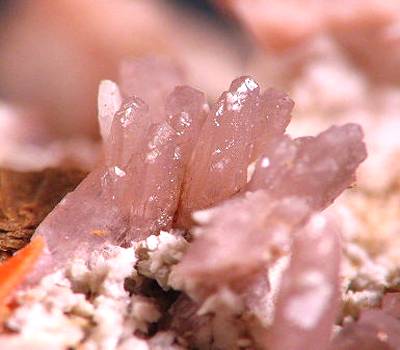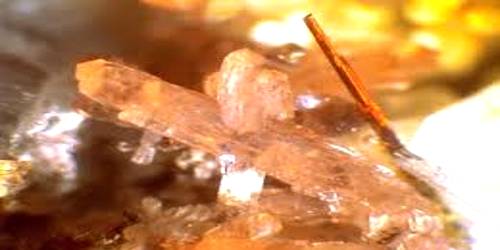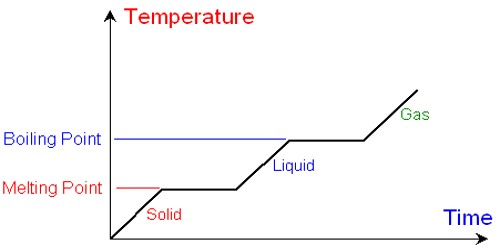Ancylite is a group of hydrous strontium carbonates minerals containing cerium, lanthanum and minor amounts of other rare-earth elements. The composition is Sr(Ce, La)(CO3)2(OH)·H2O with ancylite-Ce enriched in cerium and ancylite-La in lanthanum. It is uncommon to a rare mineral that can be found as an accessory mineral in nepheline syenite and carbonatites.
General Information
- Category: Carbonate mineral
- Formula: Sr(Ce, La)(CO3)2(OH)·H2O
- Crystal system: Orthorhombic
- Crystal class: Dipyramidal (mmm).
Localities include in Greenland, Canada, the United States, Russia, Norway, China, Brazil, and the Democratic Republic of the Congo. Ancylite was first described in 1899 for an occurrence in the Narsarsuk pegmatite in west Greenland and named from the Greek αυκιλος for curved in reference to it’s rounded or distorted crystal form.

Properties
- Color: Light yellow, orange-yellow, yellow-brown, grey
- Cleavage: None
- Fracture: Splintery
- Tenacity: Brittle
- Mohs scale hardness: 4–4.5
- Luster: Dull
- Streak: White
- Diaphaneity: Translucent
- Density: 3.95 g/cm3
A mineral is basically composed of various elements in varying proportions. These elements define how the mineral will behave when exposed to different conditions. These chemical properties also depend on the way the mineral atoms are bound in the mineral’s crystal structure. On the basis of the crystallography of minerals, a chemical formula is designed for better interpretation of its structure.
Information Source;
















